Note: There is now a newer Novel Coronavirus (COVID-19) Situation Report 67.
WHO Novel Coronavirus (COVID-19) Situation Report 66
- Three new countries/territories/areas from the Region of the Americas (1), and African Region (2) have reported cases of COVID-19.
- TheUnited Nations launched a US$2 billion COVID-19 Global Humanitarian Response Plan to support the world’s most vulnerable countries. More information can be found here.
- The WHO Director-General mentioned many key issues and action steps to effectively combat COVID-19, as well as maintaining physical distance but not social distance. More information can be found here.
- WHO published the COVID-19: Operational guidance for maintaining essential health services during an outbreak and the Handbook for public health capacity-building at ground crossings and cross-border collaboration on March 25, 2020. All guidance documents can be found here.
- In light of additional evidence, WHO maintains the recommendation of performing hand hygiene and regularly cleaning and disinfecting surfaces. The use of medical masks and respirators are for circumstances and settings where aerosol generating procedures are performed. Greater detail can be found in Subject in Focus.
Risk Assessment
Global Level: Very High
Coronavirus Situation in Numbers
Globally
- 462,684 confirmed cases (49,219 new)
- 20,834 deaths (2,401 new)
Western Pacific Region
- 99,058 confirmed cases (1,292 new)
- 3,540 deaths (22 new)
European Region
- 250,287 confirmed cases (29,771 new)
- 13,950 deaths (1,964 new)
South-East Asia
- 2,536 confirmed cases (192 new)
- 79 deaths (7 new)
Eastern Mediterranean Region
- 32,442 confirmed cases (2,811 new)
- 2,162 deaths (154 new)
Regions of the Americas
- 75,712 confirmed cases (14,878 new)
- 1,065 deaths (252 new)
African Region
- 1,937 confirmed cases (275 new)
- 31 deaths (2 new)
Subject In Focus: COVID-19 Virus Persistence: Implications for Transmission and Precaution Recommendations
An experimental study, which evaluated virus persistence of the COVID-19 virus (SARS-CoV-2), has recently been published in the NEJM1. In this experimental study, aerosols were generated using a three-jet Collison nebulizer and fed into a Goldberg drum under controlled laboratory conditions. This is a high-powered machine that does not reflect normal human coughing or sneezing nor does it reflect aerosol-generating procedures in clinical settings. Furthermore, the findings do not bring new evidence on airborne transmission as aerosolization with particles potentially containing the virus was already known as a possibility during procedures generating aerosols.
In all other contexts, available evidence indicates that COVID-19 virus is transmitted during close contact through respiratory droplets (such as coughing) and by fomites.2-8 The virus can spread directly from person to person when a COVID-19 case coughs or exhales producing droplets that reach the nose, mouth or eyes of another person. Alternatively, as the droplets are too heavy to be airborne, they land on objects and surfaces surrounding the person. Other people become infected with COVID-19 by touching these contaminated objects or surfaces, then touching their eyes, nose or mouth. According to the currently available evidence, transmission through smaller droplet nuclei (airborne transmission) that propagate through air at distances longer than 1 meter is limited to aerosol generating procedures during clinical care of COVID-19 patients.
As such, WHO continues to recommend that everyone performs hand hygiene frequently, follows respiratory etiquette recommendations and regularly clean and disinfect surfaces. WHO also continues to recommend the importance of maintaining physical distances and avoiding people with fever or respiratory symptoms. These preventive measures will limit viral transmission.
Since the start of the COVID-19 outbreak, and in alignment with available evidence, WHO maintains the recommendation, in the context of droplet and contact precautions for the use of medical masks for regular care of COVID-19 patients and respirators (N95, FFP2 or FFP3) for circumstances and settings where aerosol generating procedures are performed.9
References
- van Doremalen N, Morris D, Bushmaker T et al. Aerosol and Surface Stability of SARS-CoV-2 as compared with SARS-CoV-1. New Engl J Med 2020 DOI: 10.1056/NEJMc2004973
- Liu J, Liao X, Qian S et al. Community transmission of severe acute respiratory syndrome coronavirus 2, Shenzhen, China, 2020. Emerg Infect Dis 2020 doi.org/10.3201/eid2606.200239
- Chan J, Yuan S, Kok K et al. A familial cluster of pneumonia associated with the 2019 novel coronavirus indicating person-to-person transmission: a study of a family cluster. Lancet 2020 DOI: 10.1016/S0140-6736(20)30154-9
- Li Q, Guan X, Wu P, et al. Early transmission dynamics in Wuhan, China, of novel coronavirus-infected pneumonia. N Engl J Med2020; DOI:10.1056/NEJMoa2001316.
- Huang C, Wang Y, Li X, et al. Clinical features of patients infected with 2019 novel coronavirus in Wuhan, China. Lancet 2020; 395: 497–506.
- Burke RM, Midgley CM, Dratch A, Fenstersheib M, Haupt T, Holshue M,et al. Active monitoring of persons exposed to patients with confirmed COVID-19 — United States, January–February 2020. MMWR Morb Mortal Wkly Rep. 2020 DOI: 10.15585/mmwr.mm6909e1external icon
- World Health Organization. Report of the WHO-China Joint Mission on Coronavirus Disease 2019 (COVID-19) 16-24 February 2020 [Internet]. Geneva: World Health Organization; 2020 Available from: https://www.who.int/docs/default-source/coronaviruse/who-china-joint-mission-on-covid-19-final-report.pdf
- Ong SW, Tan YK, Chia PY, Lee TH, Ng OT, Wong MS, et al. Air, surface environmental, and personal protective equipment contamination by severe acute respiratory syndrome coronavirus 2 (SARS-CoV-2) from a symptomatic patient. JAMA. 2020 Mar 4 [Epub ahead of print].
- WHO Infection Prevention and Control Guidance for COVID-19 available at https://www.who.int/emergencies/diseases/novel-coronavirus-2019/technical-guidance/infection-prevention-and-control
Countries, territories or areas with reported laboratory-confirmed COVID-19 cases and deaths, March 26, 2020
| Country/Territory/Area | Confirmed Cases |
|---|---|
| China | 81961 |
| Italy | 74386 |
| United States of America | 63570 |
| Spain | 47610 |
| Germany | 36508 |
| Iran | 27017 |
| France | 24920 |
| Switzerland | 9714 |
| United Kingdom | 9533 |
| Republic of Korea | 9241 |
| Netherlands | 6412 |
| Austria | 5888 |
| Belgium | 4937 |
| Canada | 3409 |
| Portugal | 2995 |
| Norway | 2916 |
| Sweden | 2510 |
| Australia | 2799 |
| Brazil | 2433 |
| Turkey | 2433 |
| Israel | 2369 |
| Malaysia | 1796 |
| Denmark | 1724 |
| Czech Republic | 1654 |
| Ireland | 1564 |
| Luxembourg | 1333 |
| Japan | 1291 |
| Ecuador | 1211 |
| Chile | 1142 |
| Pakistan | 1057 |
| Poland | 1051 |
| Thailand | 934 |
| Romania | 906 |
| Saudi Arabia | 900 |
| Finland | 880 |
| Russian Federation | 840 |
| Greece | 821 |
| Indonesia | 790 |
| Iceland | 737 |
| International (Diamond Princess Cruise Ship) | 712 |
| South Africa | 709 |
| India | 649 |
| Philippines | 636 |
| Singapore | 631 |
| Panama | 558 |
| Qatar | 537 |
| Slovenia | 528 |
| Peru | 480 |
| Mexico | 478 |
| Colombia | 470 |
| Egypt | 456 |
| Bahrain | 419 |
| Croatia | 418 |
| Estonia | 404 |
| Dominican Republic | 392 |
| Argentina | 387 |
| Serbia | 384 |
| Iraq | 346 |
| Lebanon | 333 |
| United Arab Emirates | 333 |
| Armenia | 290 |
| Lithuania | 274 |
| Algeria | 264 |
| New Zealand | 262 |
| Hungary | 261 |
| Bulgaria | 242 |
| Morocco | 225 |
| Latvia | 221 |
| Uruguay | 217 |
| Slovakia | 216 |
| Andorra | 213 |
| Kuwait | 208 |
| San Marino | 208 |
| Costa Rica | 201 |
| North Macedonia | 177 |
| Albania | 174 |
| Bosnia and Herzegovina | 173 |
| Tunisia | 173 |
| Jordan | 172 |
| Ukraine | 156 |
| Republic of Moldova | 149 |
| Burkina Faso | 146 |
| Vietnam | 141 |
| Cyprus | 132 |
| Faroe Islands | 132 |
| Malta | 129 |
| Brunei Darussalam | 109 |
| Sri Lanka | 102 |
| Oman | 99 |
| Senegal | 99 |
| Kazakhstan | 97 |
| Cambodia | 96 |
| Réunion | 94 |
| Azerbaijan | 93 |
| Venezuela | 91 |
| Belarus | 86 |
| Afghanistan | 80 |
| Côte d’Ivoire | 80 |
| Georgia | 77 |
| Guadeloupe | 76 |
| Cameroon | 72 |
| Kosovo | 71 |
| Ghana | 68 |
| Martinique | 66 |
| Uzbekistan | 65 |
| Palestinian Territory | 64 |
| Trinidad and Tobago | 60 |
| Cuba | 57 |
| Honduras | 52 |
| Montenegro | 52 |
| Democratic Republic of the Congo | 51 |
| Liechtenstein | 51 |
| Puerto Rico | 51 |
| Mauritius | 47 |
| Nigeria | 46 |
| Kyrgyzstan | 44 |
| Paraguay | 41 |
| Rwanda | 41 |
| Bangladesh | 39 |
| Bolivia | 39 |
| Guam | 37 |
| Mayotte | 35 |
| Guernsey | 30 |
| French Guiana | 28 |
| Gibraltar | 26 |
| Jamaica | 26 |
| French Polynesia | 25 |
| Kenya | 25 |
| Guatemala | 24 |
| Isle of Man | 23 |
| Monaco | 23 |
| Togo | 23 |
| Aruba | 19 |
| Madagascar | 19 |
| Barbados | 18 |
| Jersey | 18 |
| Virgin Islands | 17 |
| New Caledonia | 14 |
| Uganda | 14 |
| El Salvador | 13 |
| Maldives | 13 |
| United Republic of Tanzania | 13 |
| Djibouti | 12 |
| Ethiopia | 12 |
| Saint Martin | 11 |
| Mongolia | 10 |
| Cayman Islands | 8 |
| Haiti | 8 |
| Bermuda | 7 |
| Dominica | 7 |
| Seychelles | 7 |
| Suriname | 7 |
| Curaçao | 6 |
| Equatorial Guinea | 6 |
| Gabon | 6 |
| Bahamas | 5 |
| Benin | 5 |
| Central African Republic | 5 |
| Fiji | 5 |
| Greenland | 5 |
| Guyana | 5 |
| Mozambique | 5 |
| Namibia | 5 |
| Syrian Arab Republic | 5 |
| Congo | 4 |
| Eritrea | 4 |
| Eswatini | 4 |
| Holy See | 4 |
| Antigua and Barbuda | 3 |
| Cabo Verde | 3 |
| Lao People’s Democratic Republic | 3 |
| Liberia | 3 |
| Myanmar | 3 |
| Nepal | 3 |
| Saint Barthelemy | 3 |
| Sudan | 3 |
| Zambia | 3 |
| Angola | 2 |
| Bhutan | 2 |
| Chad | 2 |
| Gambia | 2 |
| Guinea | 2 |
| Guinea-Bissau | 2 |
| Mali | 2 |
| Mauritania | 2 |
| Montserrat | 2 |
| Nicaragua | 2 |
| Niger | 2 |
| Saint Kitts and Nevis | 2 |
| Saint Lucia | 2 |
| Sint Maarten | 2 |
| Somalia | 2 |
| Zimbabwe | 2 |
| Belize | 2 |
| Grenada | 1 |
| Libya | 1 |
| Papua New Guinea | 1 |
| Saint Vincent and the Grenadines | 1 |
| Timor-Leste | 1 |
| Turks and Caicos | 1 |
| Total | 462684 |
Recommendations and Advice for the Public
If you are not in an area where COVID-19 is spreading or have not traveled from an area where COVID-19 is spreading or have not been in contact with an infected patient, your risk of infection is low. It is understandable that you may feel anxious about the outbreak. Get the facts from reliable sources to help you accurately determine your risks so that you can take reasonable precautions (see Frequently Asked Questions). Seek guidance from WHO, your healthcare provider, your national public health authority or your employer for accurate information on COVID-19 and whether COVID-19 is circulating where you live. It is important to be informed of the situation and take appropriate measures to protect yourself and your family (see Protection measures for everyone).
If you are in an area where there are cases of COVID-19 you need to take the risk of infection seriously. Follow the advice of WHO and guidance issued by national and local health authorities. For most people, COVID-19 infection will cause mild illness however, it can make some people very ill and, in some people, it can be fatal. Older people, and those with pre-existing medical conditions (such as cardiovascular disease, chronic respiratory disease, or diabetes) are at risk for severe disease (See Protection measures for persons who are in or have recently visited (past 14 days) areas where COVID-19 is spreading).

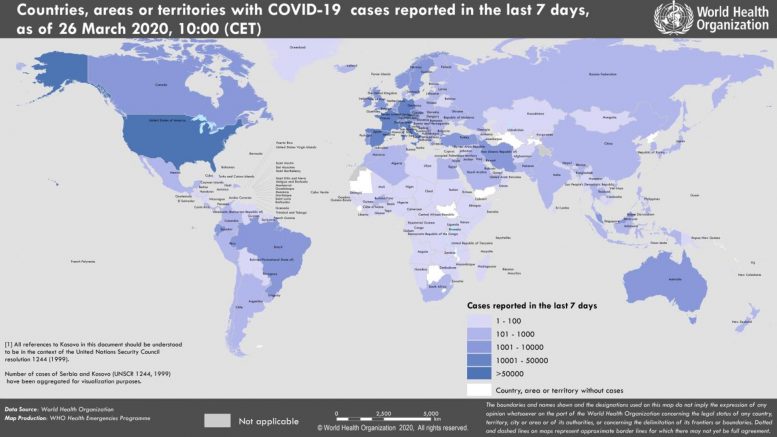
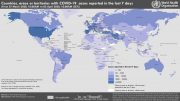
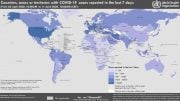
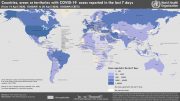
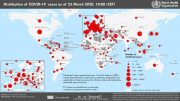
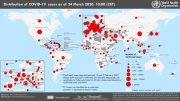
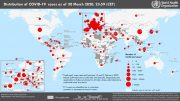
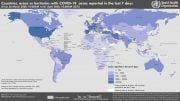
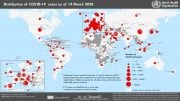
Update this information!
This page definitely has all of the information I needed concerning this subject and didn at know who to ask